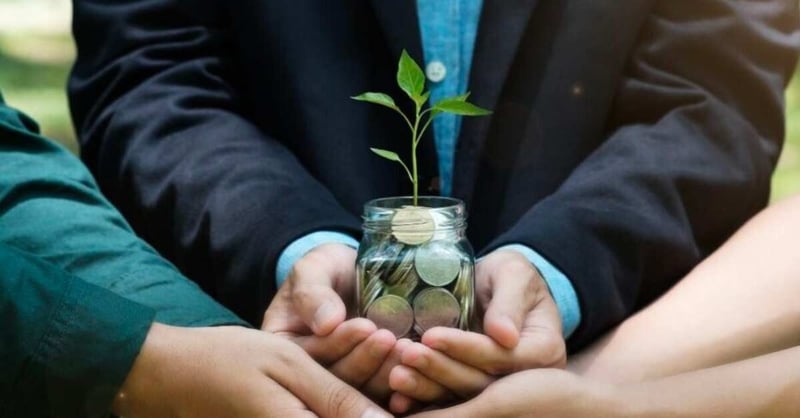Carbon Credits Explained - A Comprehensive Guide
Written by: Josh Maraney Save to Instapaper
In the global effort to combat climate change, carbon credits have emerged as a powerful tool for offsetting greenhouse gas emissions. But what exactly are carbon credits, and how do they work? This article aims to demystify the concept and provide insights into how carbon credits can be an effective part of sustainability efforts for both individuals and corporations.
What are Carbon Credits?
Carbon credits are a form of environmental currency. One carbon credit typically represents the reduction or removal of one metric ton of carbon dioxide (CO2) emissions from the atmosphere. These credits can be generated through various activities like renewable energy projects, afforestation, or methane capture, among others.
Individuals and businesses can buy these credits to offset their own carbon footprints—essentially balancing out the emissions they produce by funding projects that remove or reduce an equivalent amount of emissions. To understand the various options available for purchasing these credits, you can visit platforms like Neutralise.
Offsetting: How Does It Work?
Offsetting your carbon footprint involves calculating the total amount of CO2 emissions you or your business are responsible for and then purchasing an equivalent number of carbon credits. These credits are then “retired” so that they can’t be sold again, ensuring that each credit is only used to offset emissions once.
For example, if a business is responsible for emitting 1,000 metric tons of CO2 in a year, they can purchase 1,000 carbon credits to offset their impact. The revenue from these credits goes towards funding projects designed to reduce or remove emissions from the atmosphere. Interested in how this works? You can delve deeper into the concept of offsetting to know more.
Types of Carbon Credits and Carbon Offsets
Carbon credits can come from various types of projects, including:
Renewable Energy: Credits generated from wind, solar, and hydroelectric projects.Forestry and Land Use: Credits from afforestation, reforestation, and sustainable land management practices.Methane Capture: Credits generated from capturing methane emissions from landfills, agricultural activities, etc.
Each type of carbon credit or offset has its verification standards and certification bodies. When purchasing credits, it’s crucial to ensure that they are credible and verified by reputable organisations. More details on the types of credits can be found under carbon credits on the Neutralise website.
The Importance of Verification and Certification
Given the critical role of carbon credits in global sustainability efforts, it’s important to ensure that the credits are verified and certified by reputable organisations. Verified carbon credits have gone through rigorous third-party assessments to confirm that they indeed represent the removal or reduction of emissions they claim. This ensures that you are actually contributing to meaningful sustainability projects when you buy these credits.
Conclusion
Carbon credits offer an effective means to offset your carbon footprint, support sustainable projects, and take part in global efforts to mitigate climate change. Understanding how these credits work, the types available, and the importance of verification can help you make informed decisions when choosing to offset your emissions. Whether you’re an individual or a corporation, platforms like carbon offsets provide various options to engage in this vital environmental action. So why wait? Take a step today to neutralise your impact on our planet.
Get new press articles by email
Top Click is one of South Africa’s leading full-service digital marketing agencies. Our custom-built, cutting-edge solutions are targeted to help you attract customers, convert leads and grow your business. From SEO and Google Ads to social media marketing and digital design, our measurable marketing campaigns deliver results – and ensure that, in a cluttered online marketplace, you rise... Read More
Latest from
- Choosing the Right Pet Food for Your Animals
- Managing Contracts With Simpler Tools
- New Website to Keep Up with the Demand for Online Pet Food Delivery in South Africa
- Machines That Make Packaging Easier
- The Role of Transit Solutions in Modern Connectivity
- How to Get Cheaper Car Insurance Without the Stress
- Making Radiology Workflows Simpler with the Right Tools
- Reduce Late Payments with These Practical Tips
- A Simple Guide to Choosing the Right Forklift for Your Business
- Keeping Your Car in Good Shape with the Right Services
- Why Property and Asset Valuations Matter
- Finding Quality Engines and Scrap Yard Services
- Practical Guide to Rooftop Tents
- Practical Uses of Vehicle Awnings
- A Look at Engine Choices Across Popular Car Brands
The Pulse Latest Articles
- Education Is The Frontline Of Inequality, Business Must Show Up (December 11, 2025)
- When The Purple Profile Pictures Fade, The Real Work Begins (December 11, 2025)
- Dear Santa, Please Skip The Socks This Year (December 10, 2025)
- Brandtech+ Has 100 Global Creative Roles For South African Talent (December 9, 2025)
- The Woman Behind Bertie: Michelle’s Journey To Cape Town’s Beloved Mobile Café (December 9, 2025)
